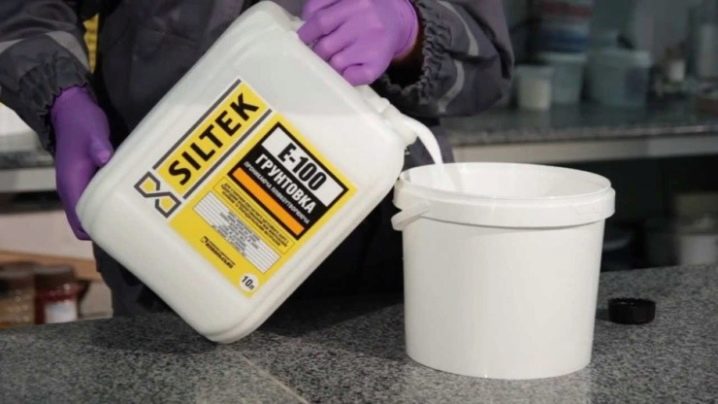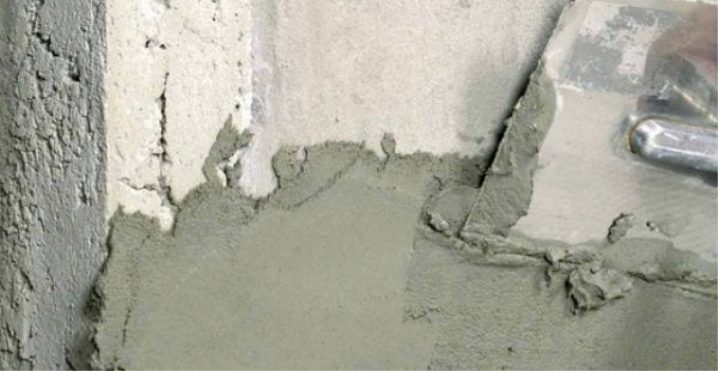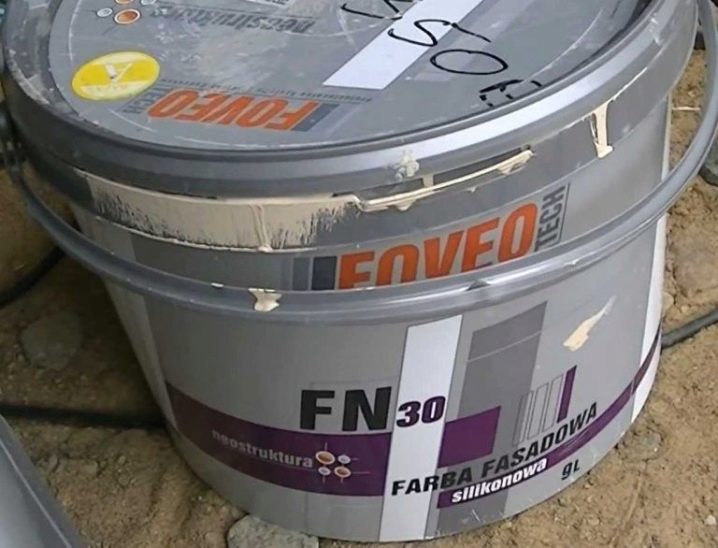Primer for exterior: selection criteria
Being engaged in finishing the facades of buildings, special attention should be paid to the preparation of the surface for further manipulations. Before applying a topcoat, it is recommended to prime the substrate. This will protect the outside from the effects of various negative factors associated with weather conditions. Most often for the treatment of the base primer will be used for exterior work.
Special features
For a start, it is worth understanding what a primer is for exterior work. Such compounds are used to strengthen the base and at the same time protect it from various atmospheric influences. In addition, the exterior primer extends the lifetime of the facade for a long period.
Compounds for the treatment of the base allow you to firmly fix the finishing materials.
Impregnations for external work are distinguished by the following features:
- Facade compositions perform an insulating function;
- the properties of the external base do not change;
- some types of primers are applied at the final stages of surface finishing.
It is worth paying attention to the fact that these building materials have a penetrating effect. Primers are introduced into the small pores and thus completely fill the various voids and cracks, even the smallest, located on the surface. These materials contain fillers and certain pigments that provide an insulating function. In addition, the foundation is reinforced.
Since after applying the primer the pores are filled, the absorbency of the outer surface decreases. Due to this, the work does not have to spend a large amount of finishing material. When using a primer in the surface treatment of the latter, the hygroscopicity index normalizes over the entire area, which then allows the paint to be distributed evenly, without the formation of defects.
Types and characteristics
Today, manufacturers produce different types of primers that can be used for outdoor applications. Choosing the appropriate option, you need to decide in advance on the composition. Differences between primers used for outdoor work, lies in the binding component. Acrylic and alkyd impregnations are the most popular.
Both of these options are fully consistent with established standards. However, it should be said that each of the species is used to process certain surfaces. Alkyd penetrating primer applied to wood. Acrylic compositions will be the ideal choice for aerated concrete and plaster.
Particular attention should be paid to the components that form the basis of the mixtures. A colloidal polymer resin solution is included in the acrylic impregnation. Water is another major component of the primer. To the composition possesses the necessary performance qualities, impregnation is supplemented with vegetable components. Acrylic primers contain sand, abrasive particles and various dyes.
As for the technical properties of facade mixtures, everything depends on additional components. Such additives affect the absorption coefficient, water-repellent qualities, often add a frost-resistant component.
Often for the preparation of the surface to finish finishing concrete contact is used. Such mixtures are not distinguished by high consumption, besides they prevent the surface from absorbing moisture. For leveling the base in such compositions add auxiliary components - cement and sand.
Typically, a deep penetration primer is applied in several layers. Most often this happens when working with uneven surfaces. When machining an exterior wall, adhesion and other performance characteristics can be improved.
Compounds for different surfaces
When deciding on a suitable primer for exterior work, be sure to consider the type of surface. As noted above, alkyd compounds are used for wood. In addition, primers can be used for the treatment of metal, concrete and galvanized steel. This is due to the fact that these compositions are characterized by versatility.
When using alkyd impregnations for metal structures and industrial structures, the material can be permanently protected from rust. After treatment with the composition, an alkyd paint is applied to the surface. Thanks to this combination of materials, metal structures have good corrosion resistance.
Alkyd primers are most often used before applying plaster or paint. If a wooden surface is treated with the help of impregnation, you can create a protective layer using liquid wallpaper. This combination of materials provides a durable base.
Regarding the acrylic primer, it can be said that it is also very versatile. It is used for processing wood, stone and concrete. But in contrast to the previous version, the consumption of the mixture during operation is somewhat less, which can be noted as an advantage.
The binder in such formulations is acrylic resin. These primers for the facade have reinforcing properties and improve adhesion during the preparatory work.
It is worth paying attention to the fact that work with acrylic impregnations should occur under certain conditions.Treatment of external walls should occur at a temperature of not less than -15 degrees.
The composition is allowed to use not only for concrete or bricks. Acrylic primers are excellent for processing chipboard and aerated concrete.
Manufacturers
When choosing a primer for facade work, special attention should be paid to the manufacturer of building mixture. One of the most popular options among modern buyers is the impregnation "Profi". Acrylic blends are low cost and low consumption during operation, which many consumers have noted. In addition, the manufacturer is a high-quality primer deep penetration, which are suitable for strengthening different surfaces.
Acrylic compositions level the absorbency of the base. Impregnations work especially well on mineral coatings. After processing, adhesion is significantly improved, finishing materials are securely fastened to the facade and are not deformed for quite a long period.
As for consumption, the average is about 100-200 g per m². It takes 2 hours to dry the surface.It should be noted that the primer is applied in only one layer.
Also among the buyers are high demand for goods from the brand Glims. Facade primer is used as an intermediate layer during the execution of finishing works. In addition, the compositions improve the properties of cement and gypsum solutions, which is important. The advantage of a primer from this brand is that it can be used for different surfaces. It can be concrete, drywall and even tile.
Another good option for work is the Tifengrund penetrating primer. The advantage of this composition is fast drying. In addition, there are no solvents in the primer, which is important for high-quality surface treatment. Such impregnation strengthens the surface and has a positive effect on the durability of the finishing material.
How to choose?
If you plan to buy a primer for finishing work, you must first decide on a few important points. The first and most important factor is the material from which the surface is made for processing.Manufacturers produce mixtures, focusing on the characteristics of the bases.
Concrete and masonry surfaces are highly durable compared to many options. On this basis, it can be concluded that these bases do not require additional reinforcement. We should not forget that the concrete and brick have a dense surface, which is smooth, and this factor affects the adhesion to the finish. This suggests that it is best to give preference to the composition with high adhesive qualities.
As for the metal, these surfaces are more susceptible to corrosion. In this case, it is best to choose compositions in which there is quartz sand. Experts recommend to give preference to primers with anti-corrosion additives. This will provide the surface with a rough texture and improve adhesion to the finishing materials.
Wooden buildings are particularly prone to decay. In addition, the material is often susceptible to damage by various insect pests. Do not forget that the tree is easily and quickly ignited. Therefore, experts recommend to give preference to compositionsin which flame retardants and antiseptics are included. Primers containing resins reduce the absorption properties of the material.
Due consideration should be given to universal formulations. This suggests that they can be used for processing different grounds. But do not forget about the properties of binding components.
Application Tips
Work with facade primers is not difficult, but it is best to familiarize yourself with step by step instructions.
- Before applying the composition, the base should be cleaned from contamination. Often, dust from surfaces is removed by a pressure jet of water, which greatly facilitates work with a large area. After cleaning, wait until the base is completely dry.
- In the next step, the primer should be diluted according to the indicated proportions. To do this, you need to prepare the container, and pour the concentrate into it. After the mixture is supplemented with the necessary amount of water, focusing on the manufacturer's instructions.
- The mixture is stirred and proceed to the application. It is recommended to use a wide brush or roller. Regarding the second option, it should be said that a tool with a long pile is chosen for working with a primer.
- The prepared building mixture is carefully distributed on the outer wall, leaving no leaks and traces. Most often, one layer is enough for complete processing. But if the surface has high absorbing properties, it is best to repeat the procedure several times to achieve the highest quality result.
- The surface must be left for several hours. In general, the drying period is indicated by the manufacturer on the packaging. Then you can apply the finishing material on the facade. Pay attention that no dust gets to the surface during drying. It is also recommended to refrain from cleaning the area. At hit of dust the primer loses the operational qualities.
On the criteria for choosing a primer for exterior work, see the following video.

















































